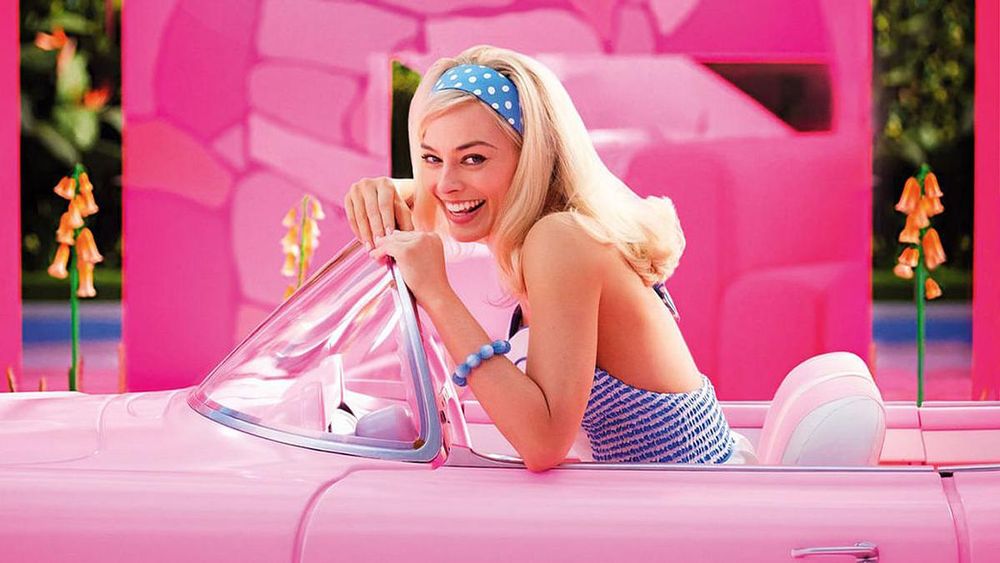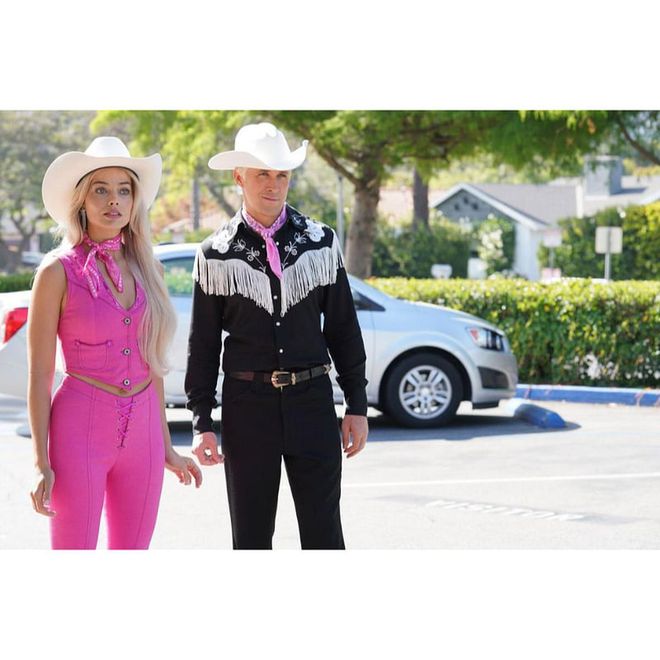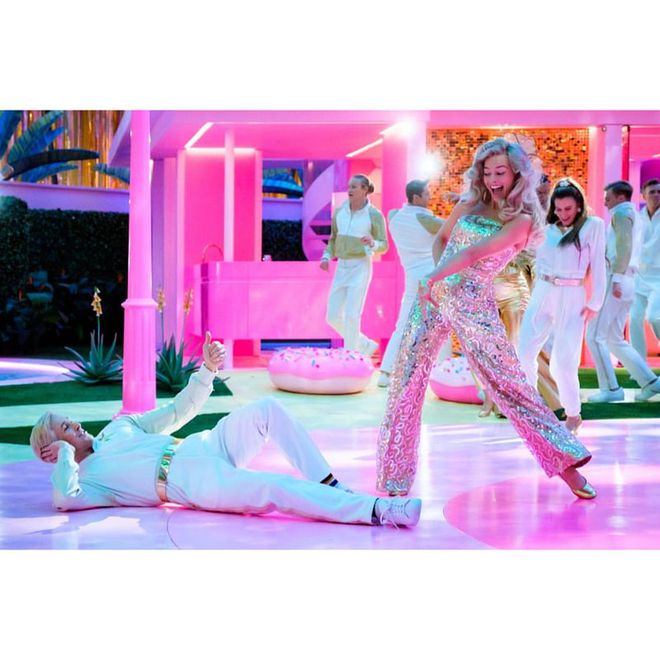Why Is It So Deeply Satisfying To Dress Like Barbie?
Talking to the film’s costume designer about all the Barbiecore outfits we saw this weekend

I thought I would miss out on Barbie’s opening-weekend festivities. The film (and the massive marketing effort surrounding it) felt like a distinctly American phenomenon, and I spent last week in a small province in the south of Spain. But at a local theatre on Saturday, I found a crowd of Spanish speakers wearing head-to-toe pink. The desire to dress like Barbie knows no borders.
On a call, the film’s Oscar-winning costume designer, Jacqueline Durran, told me she could not succinctly encapsulate how she felt about the international, inescapable Barbie cosplay. “I wasn’t expecting it at all,” she said. “I’m actually not only surprised by it, but also kind of baffled by it. And the thing is, it was already there in the ether before we even started the movie.”
Social media made #Barbiecore go viral months before anyone even knew what the movie was about, long before we’d seen the extent of star Margot Robbie’s fabulous looks both in the film and on the red carpet. Everyone, everywhere, just seemed to unanimously agree that embracing the high-femme aesthetic of a beloved childhood doll was it. This year, Barbie has collaborated with Gap, PacSun, Zara, Crocs, Bloomingdale’s in-house line Aqua, and even French luxury house Balmain on clothing, shoes, and accessories that look like they could easily be shrunk and sold in a plastic-wrapped box. So perhaps it’s no surprise that once the film hit theatres, dressing like the protagonist almost felt required for entry.
Related article: The Real Barbie Dolls Inspiring Margot Robbie’s Barbie-core Outfits

Photo: Courtesy of Warner Bros. Pictures
Barbie

Photo: Courtesy of Warner Bros. Pictures
Barbie
Aware of the life cycle of such massive trends, Durran partnered with vintage online retailer ThredUp to curate a selection of over 250 secondhand pieces that could help anyone achieve a Barbie look more sustainably. “I just thought of what a brilliant idea it was, because I’m conscious that everyone’s really enthusiastic about Barbie at the moment, but it’s not a look that you’re going to wear again and again and again. It’s a look that you’re going to play around with and dress up and change and do different things with.”
Barbie’s look lends itself to flexibility because it isn’t particularly static. “Barbie always dresses for what she’s doing," Durran explains. Unlike other style icons, Barbie doesn’t actually have a uniform—unless her job requires it. So Durran took a more conceptual approach to dressing Robbie in the film: “Instead of her wardrobe being a reflection of her character, it’s a reflection of the wider idea of Barbie.” And that wider idea has shifted massively with the movie’s release.

Photo: Courtesy of Warner Bros. Pictures
Barbie
On TikTok this past weekend, #BarbieMovie surpassed 5.4 billion views. A significant portion of the videos uploaded under the hashtag feature girls and grandmothers alike donning pink looks to see the film. There are also plenty of reflections on the beauty of girlhood—which is starting to feel like an unofficial theme of the summer, when you take into account things like Taylor Swift’s glittery, massive Eras Tour or the second saccharine season of The Summer I Turned Pretty and the finale of Never Have I Ever.
Writer and director Greta Gerwig frames Barbie, in all her hot-pink glory, as a force for liberation. “I hadn’t really ever thought about that simple fact that dolls had always been babies before [Barbie came out in 1959],” Durran said. “And girls, therefore, were always mothering them. And suddenly with Barbie, it wasn’t about that. It was about imagining doing something. The doll was the representation of what you could achieve—which is amazing! But I had never thought about Barbie like that. I tend not to think of her as an emancipator.”

Photo: Courtesy of Warner Bros. Pictures
Barbie
“Barbie as emancipator” is now the popular opinion. The movie presents her not as a consumerist prop intentionally setting unrealistic beauty standards, but as a misunderstood victim of the same patriarchy her human playmates are forced to contend with. It asks us to reinterpret her way of dressing, too—to stop seeing all the pinks and matched sets as basic in the most derogatory form of the word, but instead as joyful and free.
Other trends that have become this much of a phenomenon in recent years have emphasised individuality (as with archival fashion) or discretion (“quiet luxury”). Barbiecore isn’t about either. It is loud and obvious and expected. It doesn’t want to be clever. It won’t make you appear inaccessibly cool or rich. It will just make you blend in—historically a cardinal sin amongst fashion-obsessed Zoomers. But apparently, there is an immense amount of comfort in that, even for Gen Z. Maybe that’s because it’s not about hiding—it’s about dressing for the sense of camaraderie the movie has engendered.

Photo: Courtesy of Warner Bros. Pictures
Barbie

Photo: Courtesy of Warner Bros. Pictures
Barbie
When I asked Durran what she hopes people will take away from the film’s costumes, she said, “That they see it as a positive image! And that they recognise things from their childhood or the times they played with Barbie, and they’re so happy to see them.” While Robbie’s looks are phenomenal, what will likely be remembered most from this moment are the outfits women are wearing to the theatre, made possible by Barbie reminding us how good the pleasures of girlhood can look—and feel.
This article originally appeared in Harper's BAZAAR US.